There’s more to Gujarat…
… that I thought you’d enjoy. Especially now that I’ve figured out how to get certain photos to upload. There’s this: that the water buffalo in Gujarat are not the run-of-the-mill sort you see elsewhere. They’re a breed from the Banni Grasslands, called, appropriately, Banni buffalo, and they give an inordinate quantity of milks a day: 11 litres! The way you can tell them from the others you see around the world are their tiny, tightly curled horns, as if they’d just gotten a stiff perm at the beauty parlour.

Apart from that, they’re like water buffalo everywhere: lovin’ their time in the local pond, like this one at Dharampar, near Lodai in the Little Rann of Kutch.

Here’s another interesting tidbit I learned, after days looking at herds of zebu cattle being walked to and from home by a single herdsman or two, like this stately gentleman.
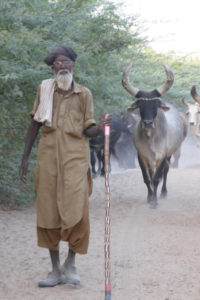
Thanks to our numerous impromptu village walks I know that most families have only a few cows. Yet we’d pull to the side and choke on the dust raised by fifty at a time. And they were mainly all grey. So how did each family recover its own animal or three at day’s end. Well, for every question there’s a simple solution. In this case, they paint their horns.
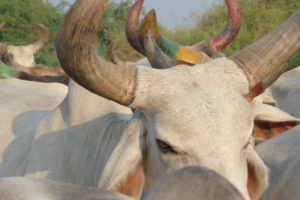
On the salt flats of the Little Rann of Kutch, we had tea with a salt farmer as the sun set. He was living with his wife and teenage daughter in the middle of the flats in a makeshift one-room shelter of yellow plastic tarps stretched around branches, They, along with their two labourers, were onsite for the 6-month season of salt harvesting, which starts at the end of monsoon, so around October, and ends with the start of intense summer heat, so around April. During the harvest season he’ll pump the saline water from its 70′-deep aquifer; from that source it will flow through narrow, shallow hand-dug channels to the drying ponds in front of his hut.

After air-drying in successive drying ponds, the last step will involve manual labor, in this case provided by two ragged men whose job is to tug a heavy stone roller over the final drying pond, to squeeze out the drops of remaining moisture, yielding salt crystals the size of large gravel which I showed you in the prior dispatch. In a successful season our salt farmer will harvest 600 tons of salt, which he’ll sell for 200 rupees per ton (a US dollar equaling about 65 rupees), grossing 120000 rupees, out of which he may pocket half after expenses.
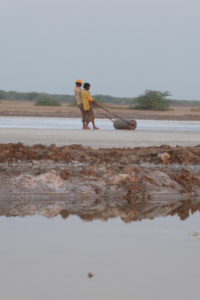
I have been staring (despite the disapproval of a certain someone) at the beautiful, and sometimes copious, and definitely weighty gold earrings of the different tribes.


When we were with the semi-nomadic Maldhari tribe in the Banni Grasslands of the Great Rain of Kutch I noticed the 9 and 10-year-old girls already had quite an array of earrings.
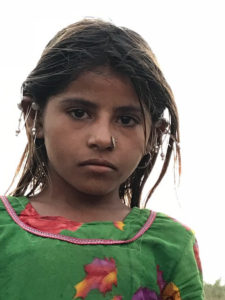
A married woman will have even more daily finery.
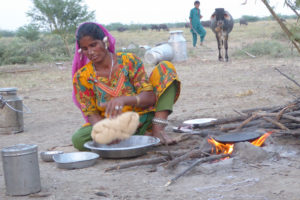
But then I saw a young woman with a 3-year-old on her hip, next to an elderly woman, both without any ear adornments and missing the bangles which rose over the biceps of other women. I asked why and learned that when a woman is widowed she removes all her finery. I could understand why the elderly woman was widowed, but something tragic had happened to the young woman’s husband, a story about which for once I didn’t dare ask.
Well enough of that. I’ll close this Bonus Dispatch on Gujarat with this Rabari shepherd, wearing the traditional skirted white jacket of the tribe. We met him when he brought his herd of sheep and goats to the water buffalo pond for a sip.
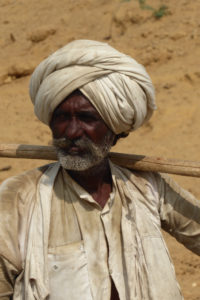
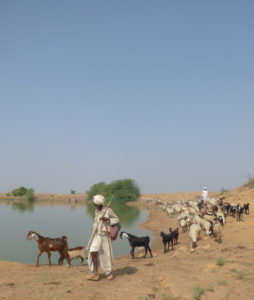
And now we really are off into Rajasthan!










